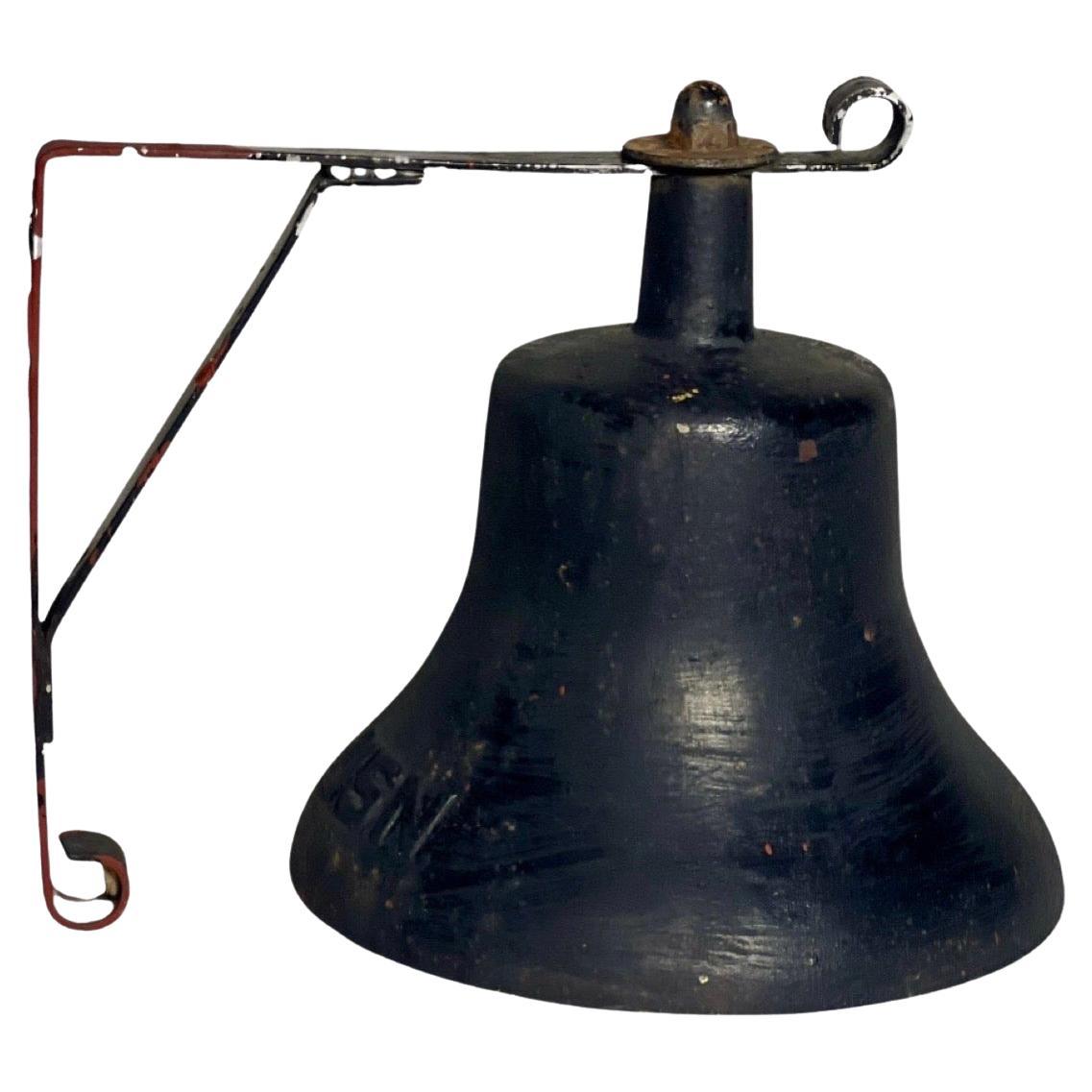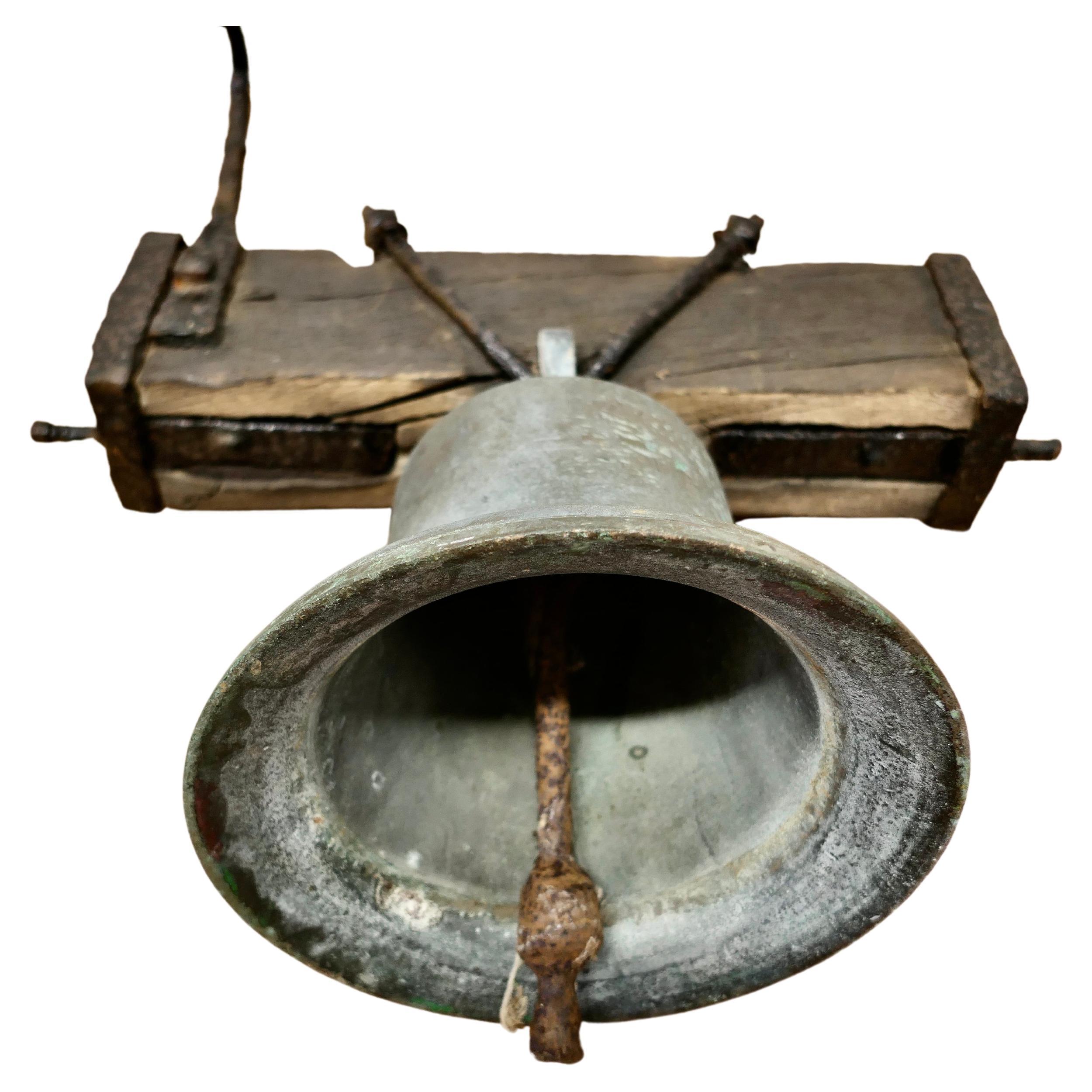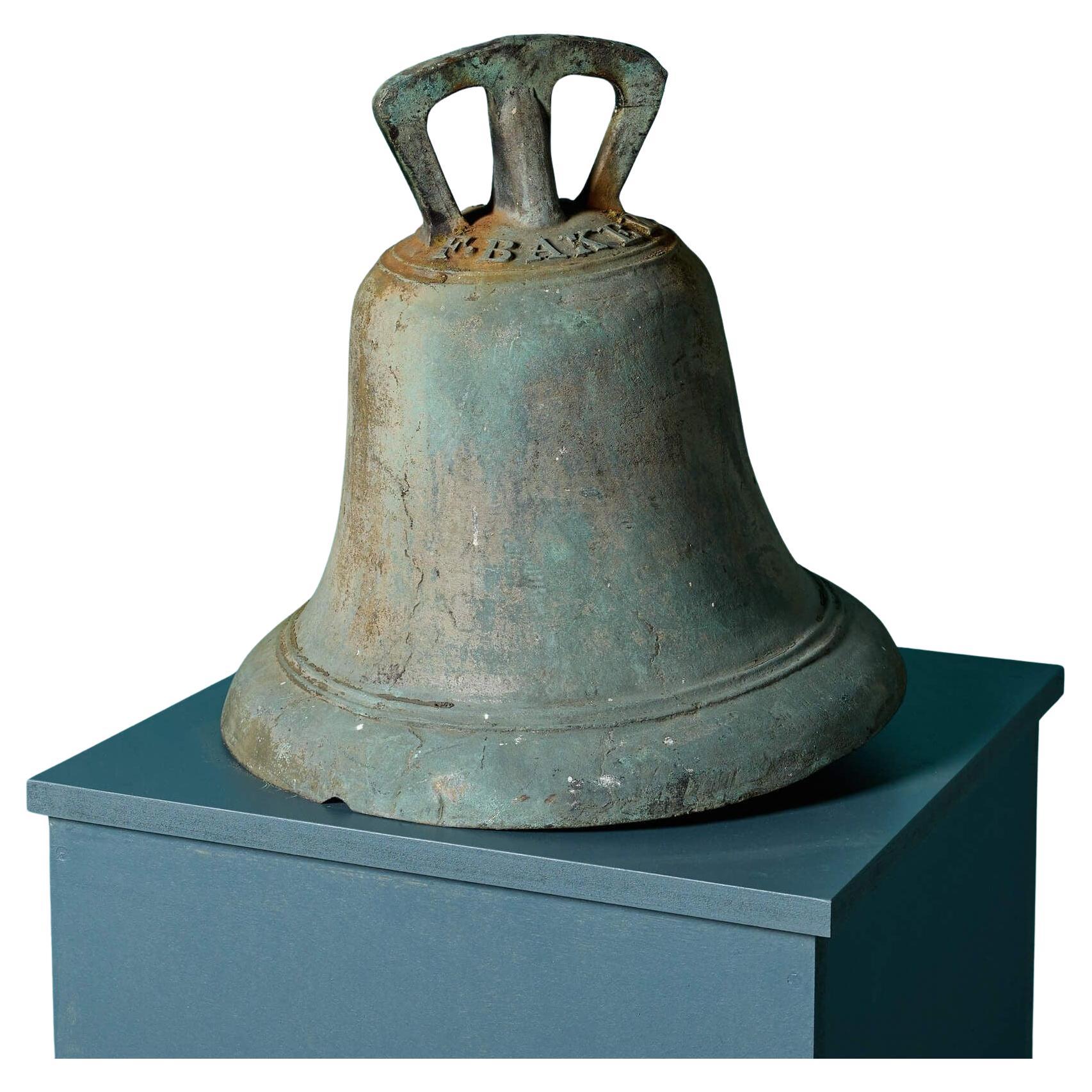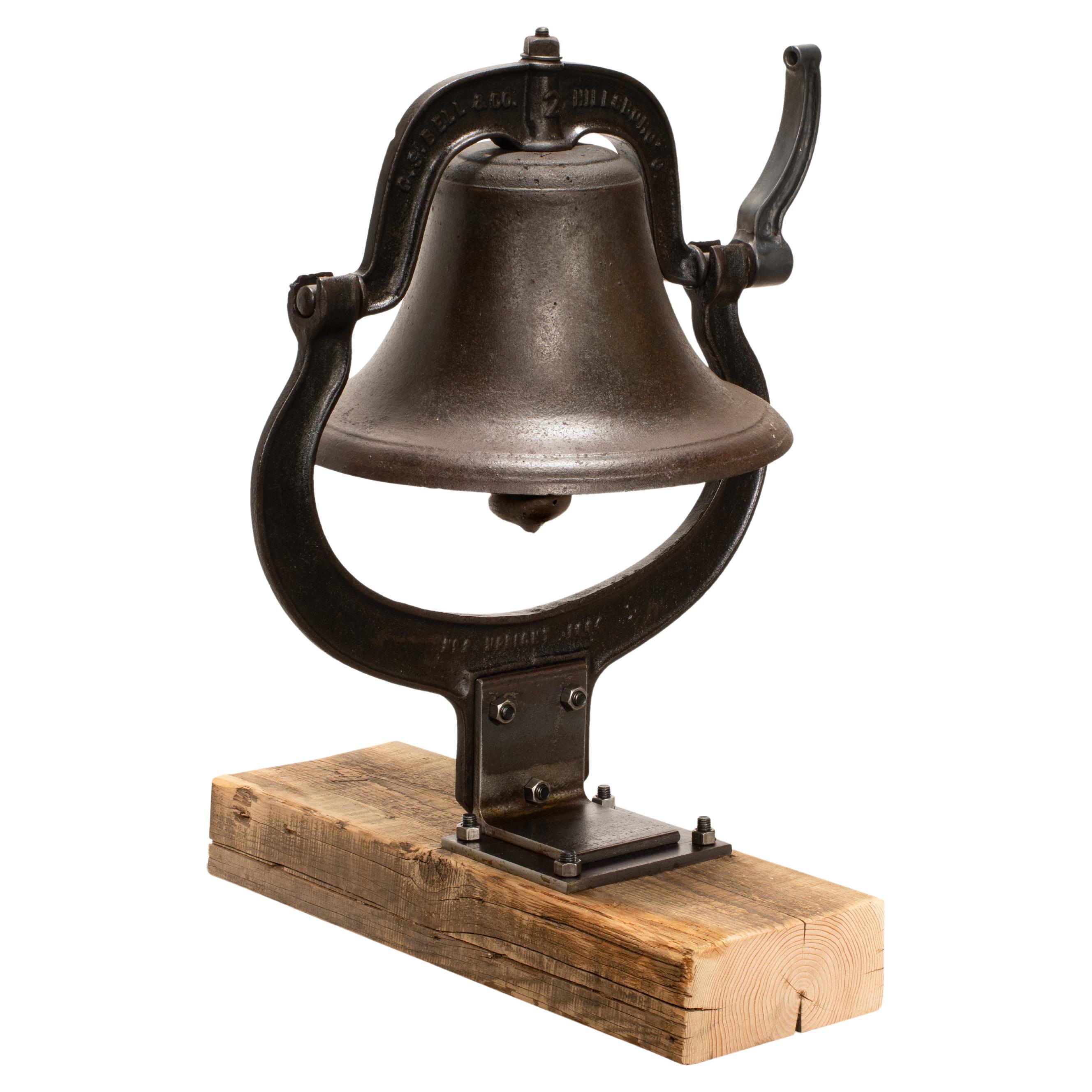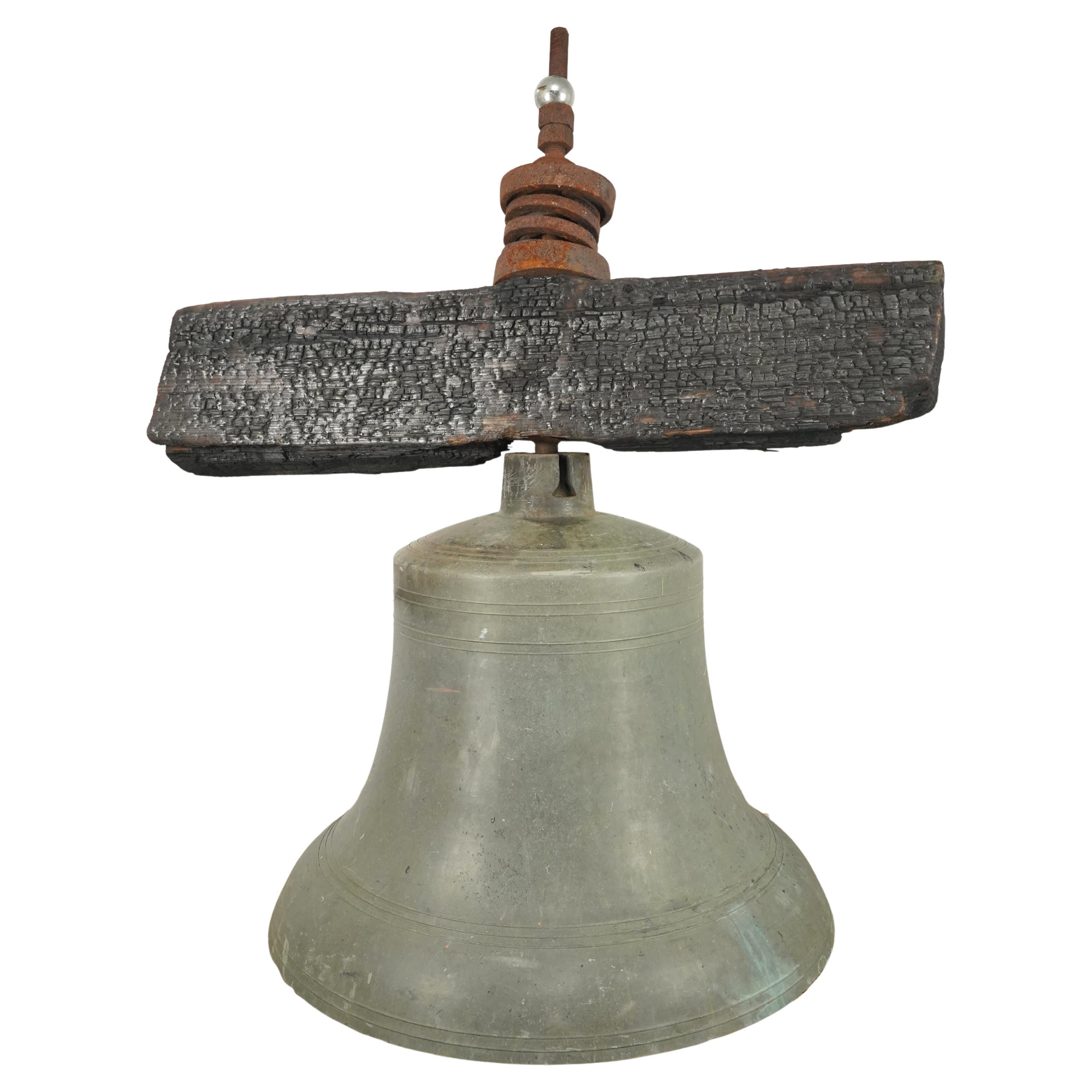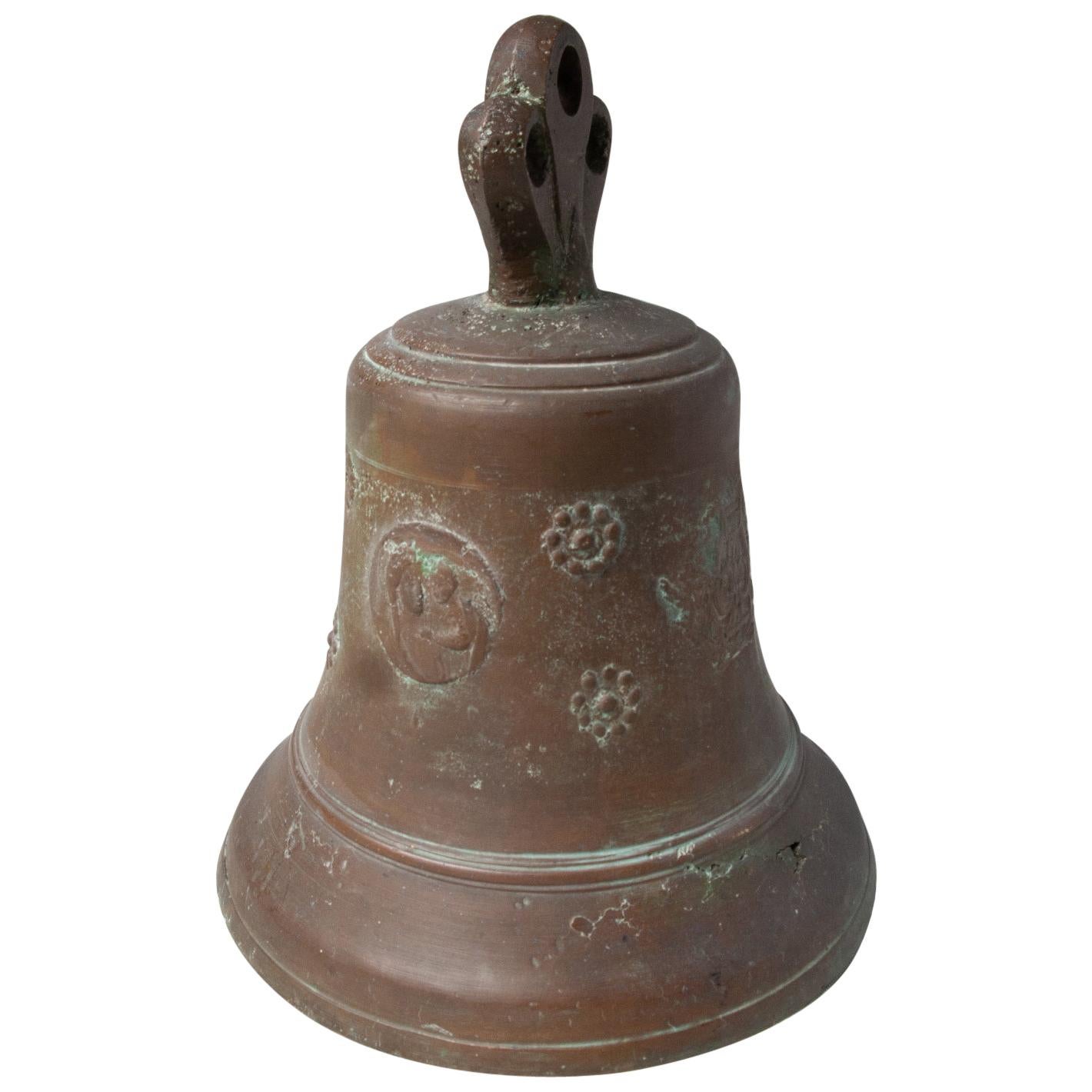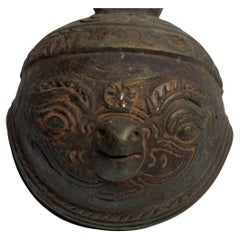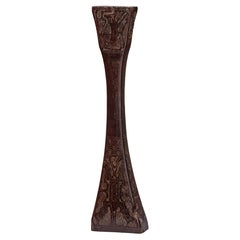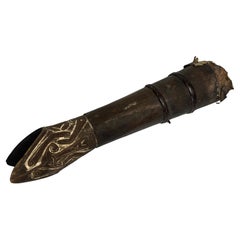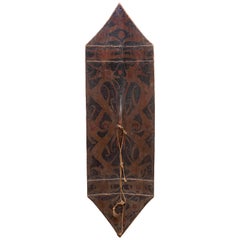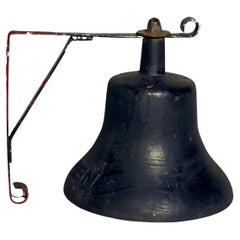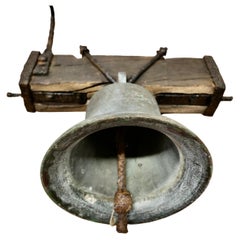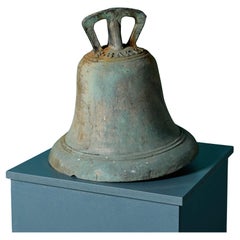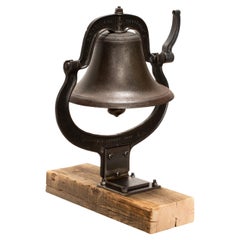Items Similar to Bell of the Dutch Colonial VOC Fortress in Jaffna, Sri Lanka
Want more images or videos?
Request additional images or videos from the seller
1 of 3
Bell of the Dutch Colonial VOC Fortress in Jaffna, Sri Lanka
$143,728.78
£106,510.93
€120,000
CA$196,217.09
A$218,283.48
CHF 114,426.93
MX$2,667,370.79
NOK 1,457,084.24
SEK 1,371,643.23
DKK 913,669.45
Shipping
Retrieving quote...The 1stDibs Promise:
Authenticity Guarantee,
Money-Back Guarantee,
24-Hour Cancellation
About the Item
The bell of the VOC fortress in Jaffna, Sri Lanka, marked JAFFANAPATNAM Ao 1747 VOC
Cast in Jaffnapatnam or Colombo from Japanese copper, 1747
Measures: Height 44 x diameter 36.5 cm
In 1658 Rijcklof van Goens (1619-1682) conquered Jaffnapatnam, a crucial Portuguese town on the North-East coast of Sri Lanka, for the VOC. For an important portrait of him by Jürgen Ovens, see Uit Verre Streken, March 2018, no. 4.
Within two decades of conquering, the Dutch built a new fortress at Jaffna overlooking the lagoon, as they considered the old Portuguese structure to be out of date. The new fort, built according to the Dutch notions, was provided with a new church named the Kruys Kerk, which was still in the fort as a museum in the 1990s. The two bells from the old Portuguese Church
of the Lady of Miracles, one large and one small with legend ‘Nossa Senhora Dos Milagres de Jafanaptao 1648’ were hung in the new church. The smaller of the two continued to hang in the tower of the Jaffna church, but was eventually removed for safety and lodged in the vestry. The fortress has long been considered by historians and archaeologists to be one of the largest, strongest and best-preserved forts built by a European colonising power in Asia. However, during the severe struggle in the 1990s between the Tamil Tigers and the Sri Lankan army, which had a base in the old Dutch fort, the castle and the Kruys Kerk were largely destroyed. With financial aid from the Netherlands, the castle is being restored, but the church will unfortunately not be rebuilt.
The present bell, with the VOC monogram and dated 1747, is likely to have been the bell of the belfry inside the fort or above the gate, used to call people to work, or to call the alarm. A bell with the monogram of a trading company is not very likely to have been a church bell to call people to church.
Provenance:
Stenton House on the river Tay, near Dunkeld, Perthshire.
Stenton Estate belonged to the Scottish Stewart family. The original part of the house dated to the 17th century with extensions in the 18th and 19th centuries. Captain James Stewart (1784-1843), who died in Colombo, possibly took the bell from the fortress and sent it to the family estate in Scotland. The bell remained in Stenton House garden until the house was sold at the end of 2019.
- Dimensions:Height: 17.33 in (44 cm)Diameter: 14.38 in (36.5 cm)
- Materials and Techniques:Bronze,Cast
- Place of Origin:Sri Lanka
- Period:
- Date of Manufacture:1747
- Condition:Wear consistent with age and use.
- Seller Location:Amsterdam, NL
- Reference Number:1stDibs: LU5458221580022
About the Seller
5.0
Recognized Seller
These prestigious sellers are industry leaders and represent the highest echelon for item quality and design.
Established in 1985
1stDibs seller since 2020
23 sales on 1stDibs
Typical response time: 2 hours
- ShippingRetrieving quote...Shipping from: Amsterdam, Netherlands
- Return Policy
Authenticity Guarantee
In the unlikely event there’s an issue with an item’s authenticity, contact us within 1 year for a full refund. DetailsMoney-Back Guarantee
If your item is not as described, is damaged in transit, or does not arrive, contact us within 7 days for a full refund. Details24-Hour Cancellation
You have a 24-hour grace period in which to reconsider your purchase, with no questions asked.Vetted Professional Sellers
Our world-class sellers must adhere to strict standards for service and quality, maintaining the integrity of our listings.Price-Match Guarantee
If you find that a seller listed the same item for a lower price elsewhere, we’ll match it.Trusted Global Delivery
Our best-in-class carrier network provides specialized shipping options worldwide, including custom delivery.More From This Seller
View AllA beautifully decorated Burmese bronze elephant bell
Located in Amsterdam, NL
Myanmar, 19th century
The bells were commonly crafted from bronze using the lost-wax casting technique, which enabled artisans to create intricate designs. Many showcase detailed mo...
Category
Antique 19th Century Burmese Sculptures and Carvings
Materials
Bronze
Large Brazilian or Guyana Amazon Indigenous Macana War Club, 18th or Earlier
Located in Amsterdam, NL
A splendid and rare Amazon indigenous wamara wood Macana war-club
Southern-Guyana or Northern Brazil, Wapitxana group of the Aruak peoples, 18th century, possibly earlier
Measure: H. 43 cm
The deep patina of the club present, and the residue on the part where it was held, attest to its great age.
This unusually large Macana is decorated with several incised whitened anthropomorphic and human figures, a decoration only found on one other documented club in the British Museum, which is illustrated in: Hjalmar Stolpe, Amazon Indian...
Category
Antique Early 18th Century Brazilian Native American Objects
Materials
Hardwood
A Baimaru Kundu drum from the Schulze Westrum collection
Located in Amsterdam, NL
New Guinea, Papua Gulf, probably Baimaru people, late 19th–early 20th century
H. 81.5 x Diam. 15 cm.
Provenance:
- Collected by German biologist and cinematographer Thomas Schulze-...
Category
Early 20th Century Papua New Guinean Tribal Art
Materials
Animal Skin, Wood
Fine Jelutong Wood Borneo Dayak Kliau or Shield, First Half of the 19th Century
Located in Amsterdam, NL
A fine Jelutong wood Dayak Kliau or shield
Indonesia, Borneo, Kalimantan, first half of the 19th century
Measures: H. 126 x W. 36 cm
The kliau or klebit is the most popular ...
Category
Antique 19th Century Indonesian Tribal Tribal Art
Materials
Wood
Large British Colonial 19th Century Ebony Sri Lankan Ceylonese Wall Bracket
Located in Amsterdam, NL
A Sri Lankan ebony wall bracket by Don Andris Cabinet Makers, Colombo
Colombo, first half 19th century, stamped Don Andris, Cabinet Makers Colombo on shelf
The shelf suspended by three foliate motif carved rests and one plain rests to the wall.
Measures: H. 50.5 x W. 43 x D. 15.5 cm
Note:
According to J.W. Bennett in 1843 (in: Furniture from British India...
Category
Antique Early 18th Century Indian British Colonial Furniture
Materials
Ebony
18th Century Polynesian Hardwood Ula Tavatava or Throwing War Club from Fiji
Located in Amsterdam, NL
A Polynesian hardwood Ula tavatava or throwing war club
Fiji, probably 18th century
All-over decorated in incised pattern, the bulbous top seems to have a stone grown into it.
H. 42 cm
Including museum-quality powder-coated stand.
Provenance:
Private collection, France
Polynesian culture is traditionally a culture of power and prestige, and there was a fine line between battle and ceremony. Warrior people par excellence, the Fijians had at their disposal a large panoply of weapons, each for a specific use.
The elegant Gata are called gun-sticks by Europeans due to the recognizable form. However, they are designed after a snake, gata in Fijian language. The Ula throwing clubs...
Category
Antique 18th Century Fijian Tribal Art
Materials
Hardwood
You May Also Like
WWII Era U.S. Navy Cast Iron Ship Bell with Bracket
Located in Doylestown, PA
WWII era classic Navy ship's bell cast in iron with raised lettering, "U.S.N." The bell features all its original components with a bracket for hanging. Bells during this period were...
Category
Vintage 1940s American Architectural Elements
Materials
Iron
Heavy Bronze Bell, Tower Bell
Located in Godshill, Isle of Wight
Heavy bronze bell, tower bell.
This is a very heavy piece it is on an Oak Yoke with iron fixings including a the bracket which holds the rope
For the purpose of the pictures and...
Category
Antique Late 19th Century British Colonial Architectural Elements
Materials
Bronze
Antique Bronze English Church Bell
Located in Wormelow, Herefordshire
An antique bronze bell reclaimed from an English church marked to F Baker.
Dating to circa 1830, this historic bronze has a beautiful patina complimented by its original wrought iro...
Category
Antique Early 19th Century English Georgian Decorative Art
Materials
Metal, Bronze
19th Century Church Bell
Located in Coeur d'Alene, ID
19th Century church bell from Post Falls with original yoke. Noted on yoke "Crystal Metal No. 2. C.S. Bell & Co. Hillsboro Bell, No. 2 Yoke 1886. 1...
Category
Antique Late 19th Century American Antiquities
Materials
Brass, Iron, Metal
$4,600 / item
Antique Bronze Ship Bell w Clapper + Charred Wood Yoke
Located in New York, NY
Antique ship bell made of bronze, including its original charred wood yoke, steel and iron fittings. With clapper. A ship bell is used for the indication of time as well as other tra...
Category
Antique 19th Century American Religious Items
Materials
Bronze, Steel, Iron
Antique Bronze Bell with Original Clapper
Located in Alessandria, Piemonte
Italian antique bronze bell: may be a Nautical Bell or a Church bell because it was recovered in the Mediterranean sea in front of Genoa many years ago. ...
Category
Antique Early 19th Century Italian Classical Roman Religious Items
Materials
Bronze
$1,981 Sale Price
44% Off
